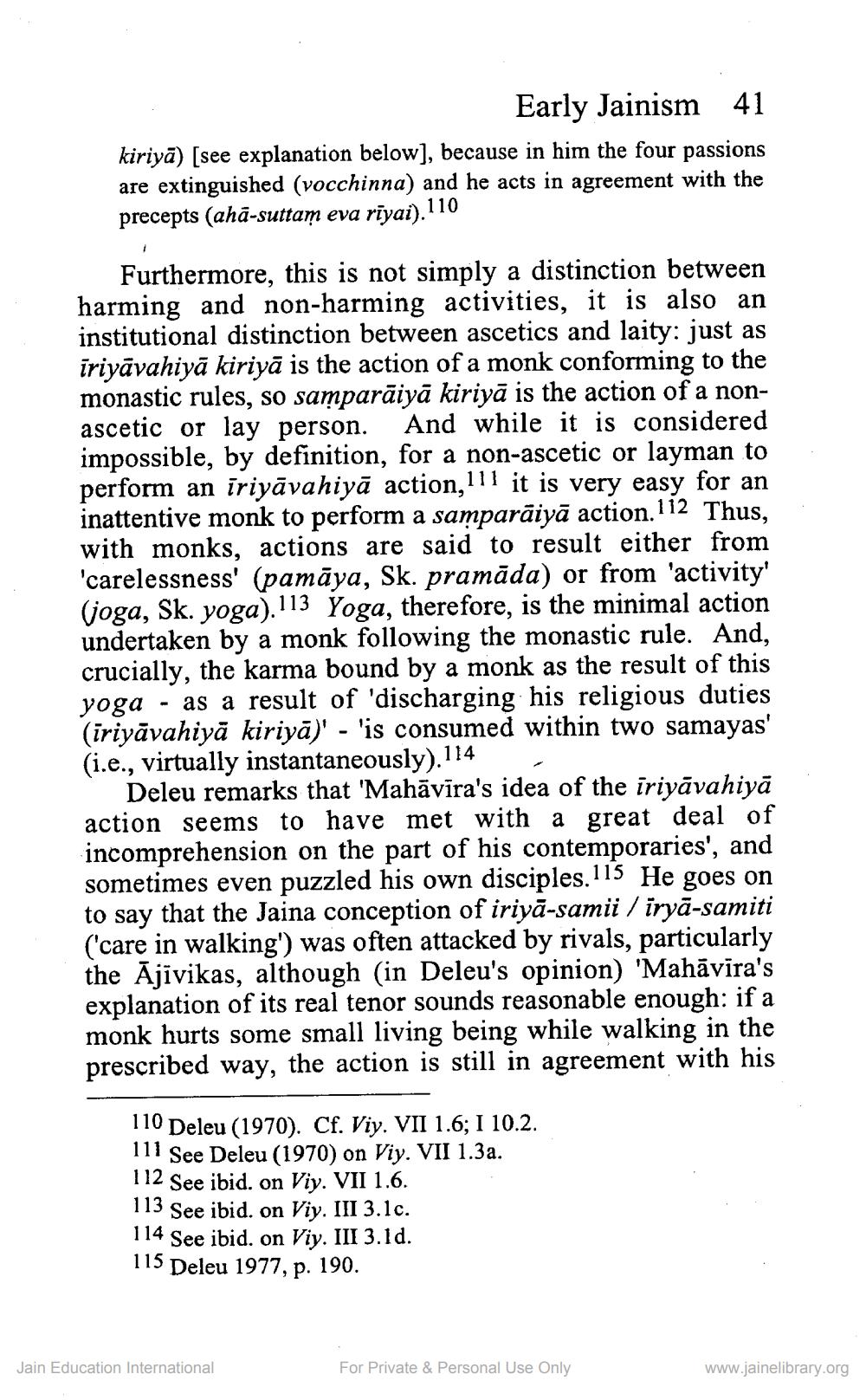________________
Early Jainism 41 kiriyā) [see explanation below], because in him the four passions are extinguished (vocchinna) and he acts in agreement with the precepts (ahā-suttam eva rīyai).110
Furthermore, this is not simply a distinction between harming and non-harming activities, it is also an institutional distinction between ascetics and laity: just as īriyāvahiyā kiriyā is the action of a monk conforming to the monastic rules, so samparāiyā kiriyā is the action of a nonascetic or lay person. And while it is considered impossible, by definition, for a non-ascetic or layman to perform an iriyāvahiyā action, 111 it is very easy for an inattentive monk to perform a samparāiyā action. 112 Thus, with monks, actions are said to result either from 'carelessness' (pamāya, Sk. pramāda) or from 'activity' (joga, Sk. yoga). 113 Yoga, therefore, is the minimal action undertaken by a monk following the monastic rule. And, crucially, the karma bound by a monk as the result of this yoga - as a result of 'discharging his religious duties (iriyāvahiyā kiriyā)' - 'is consumed within two samayas' (i.e., virtually instantaneously).114
Deleu remarks that 'Mahāvīra's idea of the iriyāvahiyā action seems to have met with a great deal of incomprehension on the part of his contemporaries', and sometimes even puzzled his own disciples. 115 He goes on to say that the Jaina conception of iriyā-samii / iryā-samiti ('care in walking') was often attacked by rivals, particularly the Ajivikas, although (in Deleu's opinion) 'Mahāvīra's explanation of its real tenor sounds reasonable enough: if a monk hurts some small living being while walking in the prescribed way, the action is still in agreement with his
110 Deleu (1970). Cf. Viy. VII 1.6; I 10.2. 111 See Deleu (1970) on Viy. VII 1.3a. 112 See ibid. on Viy. VII 1.6. 113 See ibid. on Viy. III 3.1c. 114 See ibid. on Viy. III 3.1d. 115 Deleu 1977, p. 190.
Jain Education International
For Private & Personal Use Only
www.jainelibrary.org




